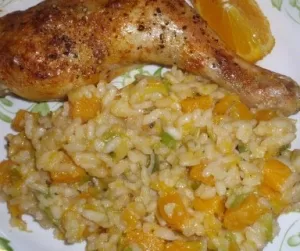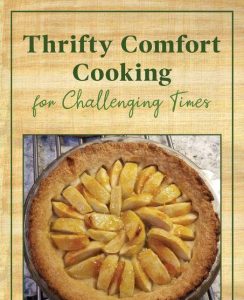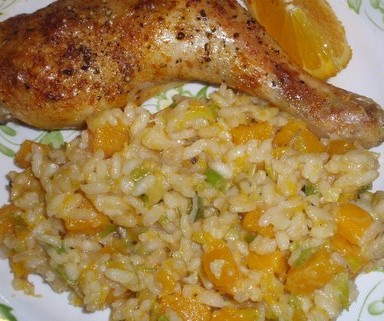By Kitchen Maven/Judi Yamada
According to the Farmers’ Almanac, astronomical winter actually starts on the Winter Solstice. It occurs on December 21, 2023, in the Northern Hemisphere. Considered the death and rebirth of the sun and observed as a festival of reverence for its warmth and light, Winter Solstice has been observed by humans since the neolithic period.
Known as the Yule by ancient Norsemen, it was celebrated from the date of Solstice until January. When many Scandinavians converted to Christianity around 1000 BC, the celebration was incorporated into St. Lucia Day, honoring an early martyr who was seen as a symbol of light. Therefore, her feast combined naturally with other solstice traditions.
Ancient Romans referred to their weeklong celebration leading up to Solstice as Saturnalia in honor of Saturn the god of agriculture. In recognition of the return of the sun, the men of the home would bring back enormous logs to burn while feasting, and the revelers would continue their banquet around the burning log until it burned to ash.
The Chinese celebration of Solstice, Dong Zhi, celebrates the return of longer days as well as an increase of positive energy. In Japan, the observance, known as Toji is considered more of a practice than a festival, is centered on good luck and health and is particularly special to farmers who look to the sun to nurture their crops. On Shab-e-Yalda “Night of Birth”, Iranians celebrate the triumph of the sun god Mithra over darkness. People gather together burning fires to light their way through darkness and make it a time to perform charitable acts.
For the Zuni, one of the Native American Pueblo Peoples in New Mexico, the Solstice represents the beginning of the year and is marked with a ceremonial dance, fasting, prayer and observance of the sun rising and setting for several days prior to Solstice. The “Sun Priest” traditionally announces the rebirth of the sun. Like the Zuni, the Hopi in Arizona observe Solstice with a celebration called “Soyal” or Soyaluna and is related to sun worship. All night celebrations include the kindling of fires, dancing, singing and sometimes gift-giving.
These observances are only a smattering of the many more worldwide. During these world sunshine celebrations, observances, and festivals, lots of food is consumed. Nuts, pomegranates, watermelon, and warming regional stews are preferred by the Iranians. The Chinese enjoy glutinous rice balls brightly colored in sweet or savory broth and stuffed dumplings. The Japanese eat kabocha squash, daikon radish and udon noodles for luck and indulge in warm baths, floating with yuzu, a citrus fruit believed to ward off colds. We mustn’t forget that Norse wassail bowl or the traditional Yule log cake. Below is my recipe for Winter Squash and Leek Risotto, an easy comforting winter recipe that’s perfect for Solstice. It stands alone well with some warm crusty bread or serves as a delicious side dish with seafood or poultry. And it’s the only recipe in this article I created and have actually prepared.
The links were chosen to represent cuisine to “let the sunshine in” during winter Solstice around the globe and have not been tested. If you try any and enjoy them, please let us know.
To all, a happy, healthy, and sunny new year.

Winter Squash & Leek Risotto
4-6 servings
3 cups cooked and peeled butternut squash*, cut in 1” cubes (kabocha squash or any winter squash you prefer)
2 medium sized leeks, trimmed and well washed between layers.
4 Tablespoons extra virgin olive oil – divided
1 ½ cups Arborio rice
1 cup dry white wine OR broth
1-quart mushroom broth OR vegetable broth, heated to warm
¾ teaspoon kosher salt
½ teaspoon freshly ground black pepper
¼ cup freshly shredded/grated Parmesan cheese
Cut off root ends and the dark green tops from leeks. Use only the white and lighter green parts of the leeks. Cut the leeks in half lengthwise. Wash very well between the layers. Wipe dry, and slice coarsely. Put 2 Tablespoons olive oil into a 12” saucepan. Heat the olive oil on medium just until the oil ripples. Add the leeks. Cook for about 5 minutes, stirring often. Remove leek slices from pan. Add 2 Tablespoons olive oil to the same pan. Again, heat the oil on medium heat until it begins rippling; add the rice, coating it with oil and stirring often for 3 or 4 minutes to toast the rice. Slowly stir in the wine (OR 1 cup broth) until most of it is absorbed.
With a ladle, add ½ cup of the heated broth to the rice, stirring slowly but constantly until most is absorbed. Continue adding ½ cups of warm broth, and stirring until all the broth has been absorbed into the rice. It will take about 20 – 25 minutes to do this, so get ready to chill for a while. Add salt and pepper. Stir and taste for seasoning. Add the cooked leeks and squash back to the rice. Stir to heat, for about 4 minutes. Stir in the cheese. Serve.
To precook squash in microwave: Add ½ cup water to a round microwave safe cake pan or pie pan. Cut the squash into chunks about 5” square, and place flesh side down in pan. Cover loosely with waxed paper and microwave on high for 4 minutes. Check for doneness. Rotate pan and microwave an additional 3-5 minutes, as needed. Cool completely and remove rind with a sharp paring knife. Cut the squash into 1” cubes.
Original Kitchen Maven
 https://www.facebook.com/Creativepenandpantry/
https://www.facebook.com/Creativepenandpantry/
For more from the Kitchen Maven, you can purchase her cookbook (that benefits the Oregon Fook Bank Tillamook County) – here
How to Celebrate Yalda with Pomegranate and Watermelon Board | Food Network
Japanese Winter Solstice Traditions (Toji) • Just One Cookbook
Dumplings & Wontons: Browse All Recipes – The Woks of Life
Yule (Dec 21-23) – Recipes for a Pagan Soul (weebly.com)
Yule Recipes: 14 Traditional & Modern Winter Meals & Beverages (otherworldlyoracle.com)
References: History.com, BBC.UK.com, MSN.com, Nytimes.com, Foodnetwork.com, encyclopedia2.freedictionary.com, incultureparent.com


.png)